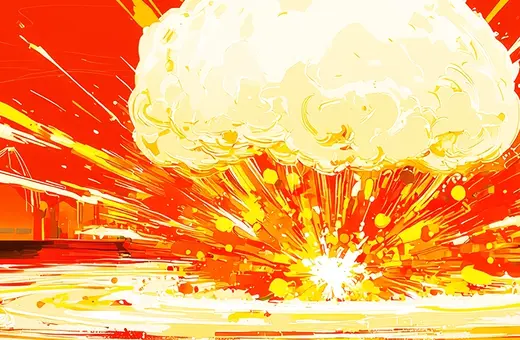‘Where have all the cults gone?’ One answer might be ‘Nowhere’, another could be ‘Everywhere!’ The vast majority are still here, but they have changed. Societies’ reactions to them have changed and new varieties have emerged.
The word ‘cult’ is an ambiguous one. Social scientists use the concept and that of ‘sect’ to distinguish various religious (and some non-religious) phenomena from institutions such as ‘church’ or ‘denomination’, both of the former being in tension with society. In popular discourse, however, ‘cult’ and ‘sect’ have come to be associated with something that is unambiguously ‘bad’. Give a group the label ‘cult’ and it is likely to conjure up the image of a dangerous pseudo-religion with satanic overtones, which is involved in financial rackets and political intrigue, indulges in unnatural sexual practices, abuses its women and children,and uses irresistible and irreversible brainwashing techniques to exploit its recruits. It can frequently resort to violence, perform numerous criminal activities and will possibly commit mass suicide.
Such a picture may be helpful in indicating the speaker’s position, but it is unlikely to tell us much about any particular group. It is true that some groups have sometimes done some of these things, but most of the thousands of new forms of religiosity and spirituality that became visible in the West after World War II were no better and no worse than many of the older, more traditional religions that have been around for centuries or even millennia. In order to avoid the pejorative implications of ‘cult’, social scientists have preferred to call such groups ‘new religious movements’ (NRMs). This is a concept that is not without some difficulties, but which, if taken to mean a religion or spiritual community that has a predominantly first-generation membership, can be a useful starting point for investigation. Among the most prominent examples of NRMs in the 1970s and ‘80s were the Unification Church (the ‘Moonies’), the Children of God (later known as The Family International), ISKCON (the International Society for Krishna Consciousness), the Church of Scientology, and the Rajneeshee (Osho) movement.
The most important fact to emphasise about NRMs is that one cannot generalise about them. They can differ from each other in every conceivable way. That said, however, there are some characteristics that one might at least look for in an NRM – at whatever point in history and in whatever society it has emerged. First, converts tend to be more enthusiastic, even fanatic, than those born into a religion. Secondly, they are likely to appeal to a particular section of society. Thirdly, many have a charismatic founder who is unbound by rules or tradition and, thereby, unpredictable and unaccountable to anyone, except perhaps a god.
Fourthly, NRMs often (though not always) have a dichotomous worldview, drawing sharp boundaries between, say, Godly and Satanic; good and bad; right and wrong; before and after; ‘them’ and ‘us’. Fifthly, they tend to be treated with suspicion and are not infrequently persecuted by the host society. Relatives of converts, the state, the media, and special groups, generically referred to as the anti-cult movement (ACM) are likely to see NRMs as some kind of threat to both individuals and the state. Rare, but horrific tragedies, such as the suicides/murders of over 900 members of Jim Jones’ Peoples Temple in Guyana and the release of sarin gas in the Tokyo underground by members of Aum Shinrikyo are constantly referred to as though the thousands of other NRMs were equally likely to carry out such atrocities.
___















Join the conversation